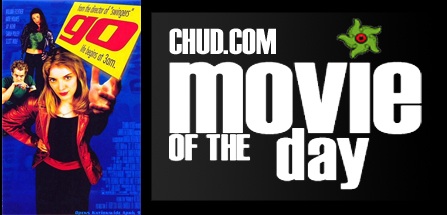The Film: Go (1999)
The Principles: Doug Liman (Director), Jay Mohr, Katie Holmes, Scott Wolf, Taye Diggs, Timothy Olyphant, Sara Polley, William Fichtner
The Premise: A Christmas story split between the L.A. party scene and some Las Vegas hijinks.
Is It Good: One of the best black comedies in the last 2 decades. The thing that this movie does so well that I often find others fail at is it has the perfect balance to make black comedy work. You never really fall in love with any of the leads, but you build a rapport with them and care for them but none of them are good to the point you are enamored with them. You watch as things go from bad to worse and laugh by thinking if I tried something like Sarah Polley, that would happen to me, or you may have had a friend like Desmond Askew and haven’t we all been approached by William Fichtner? The characters are believable but most the situations are not even close.
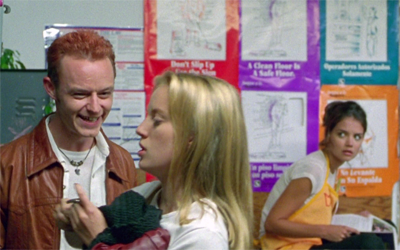
When doing my rewatch of this I was amazed at how many times I found myself thinking this is a perfect predecessor film to The Hangover. While not having to rebuild what happened, in Go we actually are watching the events unfold before our eyes as they are happening one story at a time. The easiest comparison is the second story where they go to Vegas and get into all kinds of trouble, but all the stories were laced with bad decisions and most of them revolved around drugs or some really stupid decisions being made, and most of them making you laugh at the expense of their misfortunes.
The actors themselves make the movie work so well. Sarah Polley does a great job of convincing kids they are high, Breckin Meyer argues his black history with a black man in a way that comes off as truly funny and Timothy Olyphant is glued to watching a violent event unfold before his eyes. Most of the actors in this film were relatively unknown when this was released, though many of them would use this film as a tent pole to carve a career for themselves. The movie only made 28 million at the box office, and I rarely meet another person who has seen this film, but it made an impact on the studios by turning a profit on the 6.5 million budget.
Is It Worth A Look: Yes. This movie took me off guard the first time I saw it at the theater and has made its way into a list of films that I felt never got the recognition it deserved. 1999 still had the Pulp Fiction effect going on. Every 4th or 5th movie was attempting to involve ultra-violent scenes strung together by witty dialogue, but so many of those movies failed miserably because they just could not find that perfect blend of humor/violence/physical chemistry that Pulp Fiction had, and Go had a shallow popularity that many attributed to being the most similar and fun.
The similarities between the two films are plentiful. Both are segmented into three parts that all intersect frequently with each other and give you are feeling you are experiencing more than a simple film, but more of a film universe. Both involve some very interesting drug scenes, and they both have consequences from playing with illegal substances. Both films also have a short intro and finale that introduce characters early and make you wait to find out how they got there. Both have some crazy violence that comes very unexpectedly. Last, they both have multiple trunk shots.
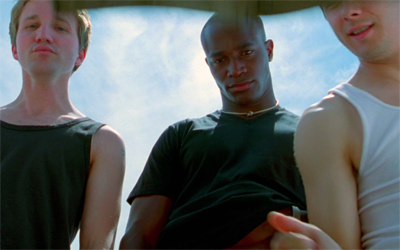
The thing that separates the films the most is the age of the actors. Where Pulp Fiction was revitalizing the career of John Travolta and establishing Samuel L. Jackson, Go was trying to revitalize Breckin Meyer and introducing the film world to Katie Holmes and Timothy Olyphant. It also prepared Director Doug Liman to step into the action world, transitioning from the dialogue heavy Swingers to the action based The Bourne Identity.
The majority of the film revolves around people who work or have crossed paths at a grocery store. The store appears to be in a low income section of town, the clients appear poorly dressed and dirty, the clerks look like career minded employees with the exception of our young foursome, played by Sarah Polley, Katie Holmes, Desmond Askew and Nathan Bexton. These four quickly create distinct characters that the following three stories expand upon.
The first story deals with Sarah Polley and was the basis for the original short that led to the feature. She has no money, has been working forever and has to figure out a way to get enough money to pay her rent the following day, or else she will be evicted on Christmas Day. What she plans leads from one bad decision to another. The best part of it is that she sets the tone that even the lead characters in this film are going to have some serious bad judgment. The further into her story we get though, the more screen time that Nathan Bexton demands. Liman did a great job infusing a lot of the trippy rave scenes with Bexton that make for some of the funnier moments in the film. His part in this film was always one of the things I remembered most about it as the years have passed, and I got further away from my initial viewing. Bexton had me very confused with a funny Johny Galecki, and looked similar enough that I thought he was the Big Bang Theory star, which I thought he had to deserve because he was so funny in this. Needless to say, I know it wasn’t the same guy, and makes me like Bexton all the more.
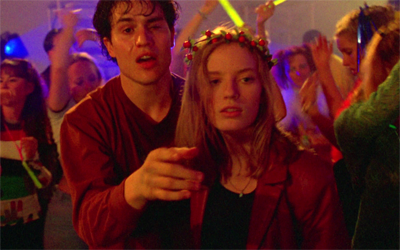
The second story is possibly the craziest of the three which follows the neon red headed Brittish adventurer played by Desmond Askew. While he puts in some of the weaker acting in the film, he gets to take advantage of doing the most outlandish things in the film. He is a walking time bomb of bad luck mixed with some unbelievably good fortune. His story also had some great lines bouncing between Taye Diggs and Breckin Meyer. Anytime these two were on the screen together there were laughs. Diggs plays a dry humor to Meyer’s over the top conversations that deal with his ancestry having a black woman in it. Meyer is at his best and milks the screen time he has by making the most of a small part.
The third story is the most unique story of the three, but to say too much would spoil one of the surprises for those that haven’t seen it. Jay Mohr and Scott Wolf star and play off each other very well, using both actors to their strengths. William Fichtner plays one of the strangest roles I have ever seen him play, Jane Krakowski makes the most of her short screen time and we even get the feature film debut of Melissa McCarthy here.
I remembered really liking this film at the theater, and thought it would make a worthy addition of the Movie of the Day column. Upon watching it again, the movie has aged well, other than the soundtrack. It is well worth a second viewing, and I will be forcing more of my friends to sit down and watch it. If you have never seen it, it will definitely reward you for your time.
Random Anecdotes:
Actors in their early careers – Katie Holmes’ third film, and after only one year of Dawson’s Creek , Nathan Bexton’s second credited film, Timothy Olyphant’s fifth film, Taye Diggs second film and Melissa McCarthy’s first film.
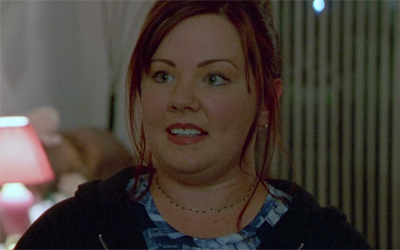
Doug Liman didn’t want to cast Scott Wolf due to Katie Holmes already being cast and he didn’t want two TV stars. He caught Mohr and Wolf talking in a hall and liked their chemistry.
Jay Mohr wanted Timothy Olyphant’s smaller drug dealer role, and continued to push for it even though he had scored a lead.
Massive Attack’s song “Angel” is featured in both Go and Marc Forster’s Stay
Cinematic Soulmates: Pulp Fiction, The Hangover, Long Stock and Two Smoking Barrels, Very Bad Things
